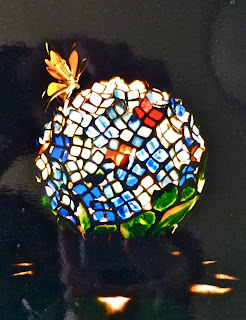Language
 |
| "My Logo": sample for a 6th Grade project |
Greetings (挨拶
– aisatsu) are important in any language, but in Japan they
are de rigeur and highly formalized if not ritualized. Our
students would come to the Art Room and line up formally (if not
always quietly) and we would exchange greetings in a kind of
admittedly not entirely natural and more than a little singsong
English, but English nonetheless. Until the new students got used to
the correct English pronunciation of my French surname [which they
never did] I encouraged them to “call me Mr. B.” and the name
stuck. In English I was Mr. B, in Japanese I was ブーシェ先生
(Boucher Teacher) The greeting, pretty much unvarying, would
go:
Me: Good Morning boys and girls.
Ss: Good Morning Mr. B.
Me: How are you today?
Ss: I'm fine, thank you, and you?
Me: I'm fine; OK; good;
so-so.--depending on my mood.
Ss: Can we come in?
Me: Yes. OK. Etc.
I eventually could get some of them to
vary the “I'm fine.” with something more real like: “I'm
tired.” or “I'm hungry.”, etc.
Discipline
No learning can take place unless you
can keep a class of thirty or more kids under control. Any teacher
who survives knows this and has developed techniques to manage a
classroom full of diverse personalities. Discipline is difficult
enough for a teacher who knows the language and customs of the
country. But here I was, a foreign teacher with limited Japanese
language ability and accustomed to a structured hierarchy of
disciplinary procedures from the classroom teacher to the principal
of the school. I was stunned to discover that there were no similar
disciplinary procedures like detention, suspension and even expulsion
of misbehaving students as I had been accustomed to as a teacher in
an American public school. Furthermore, as I was teaching in a
for-profit private school, we were discouraged from letting the
parents of problem kids know about it. In a nutshell, I had to deal
with it pretty much on my own. Enter Behavior Modification.
| partial view of semi-circular table arrangement |
B.M. is a system of classroom control
techniques that I had learned when I was studying for a Masters in
Special Needs for Emotionally Disturbed Children. I wouldn't say that
my students were emotionally disturbed (although I've had my doubts
about a few over the years), but a system of rewards and consequences
(positive and negative reinforcement) will work with average children
just as well. Building on techniques I had used in my special needs
class in Kingston I rearranged the furniture in the Art Room to
improve visual and physical contact. The typical Japanese classroom
is rigidly laid out with desks neatly arranged in straight rows
reinforcing the beloved Japanese preference for conformity and
military-like precision. I wanted an environment that would
discourage conformity and promote a freer feeling to spur creativity
but, at the same time, not inspiring a riotous, anything goes
atmosphere. To this end I rearranged the tables in a roughly
semi-circular pattern around two tables that could be arranged in an
L-shape that I could use for demonstration and instructions. It was,
at the same time, harder for the kids to hide from my roving eye, see
better what I was doing and sense that I wasn't some remote figure
lecturing from the blackboard but actively involved in exploring and
working together to create something that wasn't there before.
To be continued...










